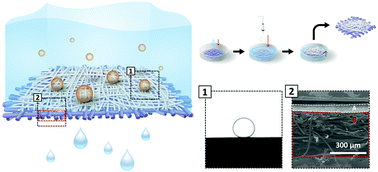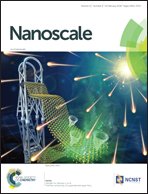An underwater superoleophobic nanofibrous cellulosic membrane for oil/water separation with high separation flux and high chemical stability†
Abstract
Oil spills and an increasing demand for the treatment of industrial oily wastewater are driving the need for continuous large-scale oil/water separation processes. Herein, we report a nanofibrous cellulosic membrane (NFC membrane) for the continuous high-flux separation of large amounts of oil/water mixtures. The NFC membrane was fabricated using wet electrospinning, a facile yet effective method for stacking nanofibrous membranes with uniform porous structures on a substrate. Owing to its cellulosic nature, the membrane showed excellent underwater superoleophobicity along with robust chemical stability and was able to separate oil/water mixtures at efficiencies exceeding 99%. Repetitive oil/water separations could be performed using a single membrane, during which the oil content in the filtrate remained extremely low (<29 ppm). The nanofibrous membrane exhibited a fine porous structure that was interconnected throughout the membrane, resulting in a high oil intrusion pressure (>30 kPa) that allowed not only gravity-driven but also pressure-driven separation of oil/water mixtures. The separation flux reached 120 000 L m−2 h−1 during pressure-driven separations, which is a very promising feature for actual applications such as the large-scale treatment of industrial oily wastewater.



 Please wait while we load your content...
Please wait while we load your content...